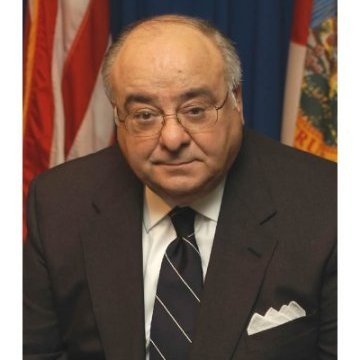
Title: Crime Scene Investigation and Management
Plenary presentation
Prof. Anthony Schembri
Former Police Commissioner in New York, USA
Abstract
This will be a presentation of real crime scenes and the management of efforts bringing together the forensic experts and the investigative personal to solve real cases. Having lead the Homicide Department department unlike CSI and other programs, police fail to collect and properly analysis a crime scene which I will demonstrate. We need to in terpret crime scenes. Sloppy police investigations, lazy forensic personnel team up to reduce the ability to solve cases with solid evidence. The research profession needs to catch up with policing, corrections and juvenile jus tice, and define a role for itself in the problem solving process. The research community needs to find ways to bring its analytical skills, its objectivity, its rigor, its independence, its ability to link theory and practice, into the messy arena of contemporary practice. Although we have made progress, the need is tremendous.
Biography
Anthony Schembri is a respected law enforcement and academic professional with over four decades’ experience in the field. Over the years, he has drawn praise from such varied sources as New York City Mayor, President Jimmy Carter, Florida Governor Jeb Bush, and New York Governor Mario Cuomo. First appointed to the Brooklyn District Attorneys Office he advanced to Deputy Chief of the Narcotics Bureau, then to Director of Training at the District Attorneys Police Academy. Anthony Schembri has served as the city’s Deputy Inspector General, investigating cases of major crime and corruption. He was appointed by the Mayor of New York as Corrections Commissioner, a position putting him in charge of 12,000 uniformed officers and 20,000 inmates at 19 separate jail facilities. Today, the Citrus County, Florida, resident serves as a Visiting Professor at Oxford and Sheffield Hallam University and named Outstanding Professor of the Year at the University of Florida.

Title: Interviewing Death Row Inmates: Infusing CEB in the Mitigation Specialist Interview
Plenary presentation
Prof. Marian Swindell
Mississippi State University-College Park, USA
Abstract
As a forensically trained social worker, I employ Cognitive, Emotional, and Behavioral (CEB) mapping in forensic interviews with death row3 inmates to uncover the impact of past trauma, particularly Adverse Childhood Experiences (ACEs). Many individuals on death row have endured significant trauma in their early lives, shaping their cognitive distortions, emotional dysregulation, and maladaptive behaviors. CEB mapping provides a structured yet flexible approach to understanding how traumatic events influence thought processes, emotional responses, and behavioral adaptations over time. In the mitigation process, forensic social workers use CEB to identify patterns that contribute to criminal behavior, highlight mitigating factors, and develop a comprehensive narrative for legal defense.
Mitigation specialists (often forensically trained social workers with MSWs or PhDs) assess how the individual conceptualizes their past, how they regulate emotions in response to distress, and how these emotions manifest in their actions. The goal is not to excuse criminal behavior but to provide a deeper understanding of the environmental, psychological, and neurological factors that contributed to it. This information is vital for mitigation efforts, as it humanizes the defendant, informs legal strategies, and may influence sentencing outcomes.
Biography
Dr. Marian Swindell was invited by the US Administrative Office of the Courts to speak at a training event for federal public defenders and private attorneys on the effects of family and community violence on brain development and architecture. She also independently contracts as a Mitigation and SME in family and community violence/dysfunction, child emotional, physical, mental, and sexual abuse, addiction as they relate to brain development. Dr. Swindell a professor of Social Work at Mississippi State University and recently made history as the first teaching PhD in Social Work and MSW to be awarded tenure and achieve the rank of professor at Mississippi State University. She has over 30 years in forensic social work and brings a wealth of information from sociology, social work, and forensic testimony evidence retrieval to this conference. Dr. Swindell completed her Ph.D. (2001) and MSW (1992) in Social Work from the University of Alabama.
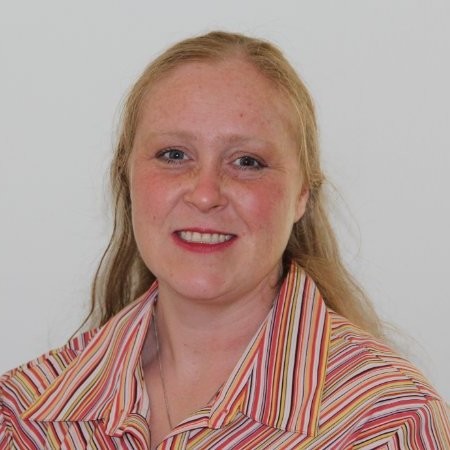
Title: You can date a fossil, a bone, and your high school sweetheart. BUT, can you date a bruise?
Keynote presentation
Teresa Devitt-Lynch
INTREPID Forensic Healthcare Consulting, USA
Abstract
Estimating the age of bruises remains a significant challenge in forensic medicine and nursing, with critical implications for legal contexts. Despite historical reliance on visual color changes (e.g., red to yellow) as markers of healing, research consistently demonstrates that this method is unreliable. This presentation aims to dismantle the myth of precise bruise dating by appearance and highlight the complex physiological variables that influence bruise evolution. Drawing on current scientific literature and case studies, I will discuss the inherent variability in bruise color progression and the lack of standardized, evidence-based criteria for temporal assessment. The presentation will also address the potential risks of misinterpretation in forensic contexts, particularly in criminal investigations and courtroom testimony. By emphasizing the limitations of visual bruise assessment, this session seeks to promote a more scientifically grounded approach to injury evaluation and to caution against the overreliance on subjective interpretations in forensic practice.
Biography
Teresa Devitt-Lynch completed her Master of Science in Nursing from the University of Wisconsin Madison, US. She is also a board-certified adult/adolescent Sexual Assault Nurse Examiner and Advanced Forensic Nurse. She is currently a legal nurse consultant with a focus on criminal cases that involve injury or medical issues. Active in professional organizations she is a member of the Academy of Forensic Nurses Board of Directors and has provided numerous forensic healthcare trainings to medical, law enforcement and legal professionals who come into contact with victims and suspects of violence.
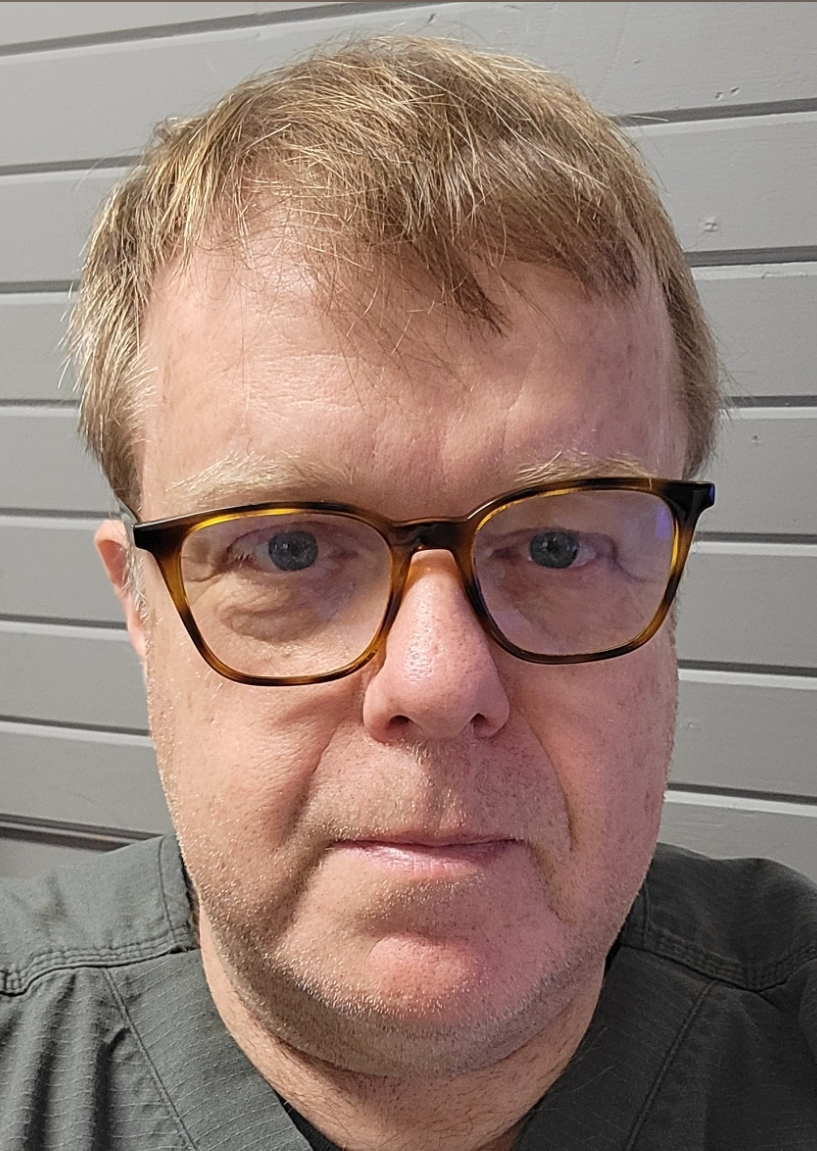
Title: Forensic Secrets of Corpse Decay
Keynote presentation
Dr. James Frizzell
Frizzell Dental, Canada
Abstract
Corpse flies, DNA sequencing, microbes and fungus of the human body decay, magots life stages, and more, to determine the time of death.
Research data contributed from Body Farms. Climate factors and how body is found [in water, or clandestine grave or above ground].
Biography
Dr James graduated from a one-year course, McGill University, Dental Forensics Program; part on-campus training with the Surete du Quebec Forensics Team. Dr James is focusing on Child Abuse, Elderly Abuse, Human Trafficking, and Intimate Partner Violence. He also gives educational PowerPoint presentations on these topics. Also, trained at University of Tennessee, Body Farm, and Clandestine Grave Recovery. Dr Frizzell’s motto is: “The Power of Observation”, in the forensic’s world.
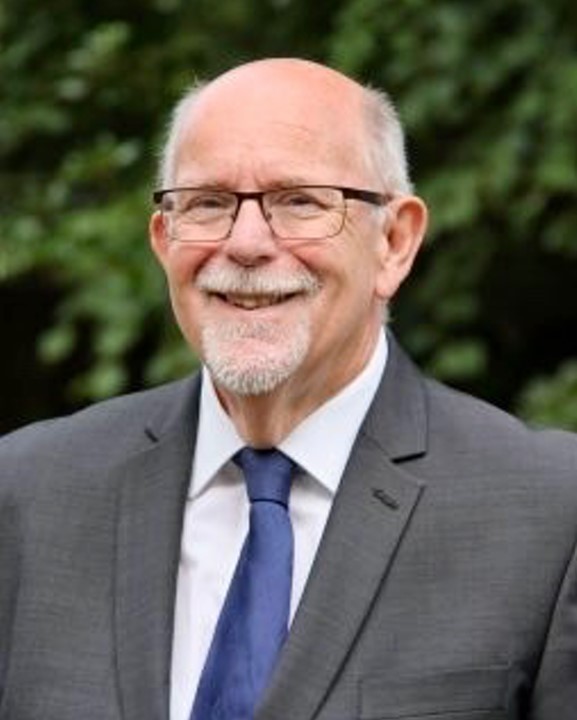
Title: Forensic Intelligence as a Technique of Investigation
Plenary presentation
Prof Robert Milne
European Forensic Institute / Honorary Editor Chartered Society of Forensic Sciences, United Kingdom
Abstract
Forensic Intelligence (FOR-INT), which has since the publishing of the first edition of my book ‘Forensic Intelligence CRC Press 2012’, has become a more accepted and developing field recognized by the National Institute of Justice USA (NIJ), who have in 2024 published guidelines to advise law enforcement on the implementation of Forensic Intelligence models. The aim of this presentation is to illustrate that by using and developing existing system, knowledge and intelligence assets, law enforcement organizations can employ Forensic Intelligence as a useful technique to use in investigations and crime reduction. For law enforcement agencies wishing to create a Forensic Intelligence working business model. The stages of using the forensic professionals’ knowledge assets combining them with crime intelligence & analysis assets, for processing and search on system assets in the creation of investigative and intelligence products require a different mindset to the older reactive due process practices in law enforcement. Work streams in setting up a FOR-INT model include forensic support quality assurance, refresher training, changes in documenta on, analysts’ awareness training, reviews of laboratory support, a review of the processes of evidence recovery in the custody suite, a review of IT support, meetings with forensic science providers to explore the availability or otherwise of legacy case data. Changes in working practices in dealing with drug distribution networks to enable upstreaming of casework through distribution nodes back to sources. Effective performance data from systems are an enabler of FOR-INT for the statistics provide data for a Bayesian approach to the work of crime analysts. I.e. what is the sampling rate for eviden al forms against crime types and what is the recovery rate by the field force? This gives a Bayesian assessment of how rare or otherwise a forensic recovery is and can provide an intelligence source at the base area outside the single case evidence attrition model, wherein can lay the resolution of unsolved or cold cases. These concepts create discussion that basic criminological models are depicted as being two dimensional but in the real world with locations sharing multiple victims and offenders, they can be depicted as being 4 dimensional, a concept explored in the presentation. The term FOR-INT defining Forensic Intelligence as an intelligence source was coined by the US Homeland Security Cross Border Patrol Laboratory’s Forensic Intelligence Attribution Team, when creating a Forensic Intelligence model for the borders of the USA in use since 2016 where it was first introduced on the Southern border. FOR-INT is a viable intelligence source alongside the standard intelligence sources, HUMINT, OSINT, SIGINT, GEOINT and RECORDS. Features seen by analysts in the mapping of forensic evidence often show the features of theoretical criminological models. These criminological features can often assist analysts when dealing with the distributions of the more common crimes with less specific data, in the creation of analytical intelligence products for the coordination and tasking of assets. In the presentation the outline of the US FOR-INT attribution model is discussed. In Forensic intelligence there is the intelligence use of what is probably the king of all evidential material types, physical evidence, which can provide specific and strong support to what might otherwise just be a crime cluster based on probability. The end game is to make better use of all forensic recoveries toward resolving single strong evidential cases for court.
Biography
Professor and Dean of Applied Sciences European Forensic Institute. Between 1969 and 2008, he had a full career as a practitioner with the Directorate of Forensic Services New Scotland Yard, in the roles of Fingerprint expert, Crime scene Investigator, Crime Scene manager and Crime Scene Coordinator. In project management he created modern sequential treatment laboratories designed to deal with the volume crime in London and pioneered the concept of Forensic Intelligence. He set up one of the world’s first Forensic Intelligence Units in 2001 and was the Head of Forensic Intelligence Metropolitan Police until 2008. He has the Kings College London University Diploma in Crime Scene Investigation and Fingerprint Expertise. He developed the wireless, three electrode, method of electrostatic dust mark lifting, the Pathfinder’ now used worldwide. In 2012 he published the textbook ‘Forensic Intelligence’ CRC Press. In 2018 he joined the European Forensic Institute as a lecturer and was invited to lecture on Forensic Intelligence at the Istituto Di Scienze Forense, Corporate University, Milan. In 2021 he was awarded a Professorship in Criminology, Forensic Criminology and Forensic Intelligence and awarded the role of President of the Istituto Di Scienze Forense University Milan. In February 2024 the university renewed his professorship. He has been a member of the Chartered Society of Forensic Sciences (CSFS) since 1983, and in October 2024 was elected as the Honorary Editor of the CSFS.

Title: The Rapidly Evolving World of Forensic DNA Analysis
Keynote presentation
Prof. Erik C Hall
Saint Louis University and Hall Forensic Consulting, USA
Abstract
Forensic DNA analysis will be discussed using current terminology, techniques, and case studies. The students will encounter both new and existing terminology in the study of the forensic DNA process. In addition, the students will interact throughout the presentation with practical examples of DNA interpretations. The students will also gain knowledge of the updated techniques being used in the crime lab today to process DNA samples effectively and efficiently. In addition, the students will be exposed to new technologies which are currently being studied for use in forensic settings. All of these topics will be tied into a historical context of how quickly DNA has evolved and where it is going from here. Lastly the students will use the knowledge gained throughout the lecture to understand how DNA is applied to case studies.
Biography
Erik Hall is the Director of the Forensic Science Program at Saint Louis University in St Louis, Missouri. Mr. Hall was the former Biology Technical Leader and a DNA analyst at the St Louis Metropolitan Police Department Crime Laboratory. At the crime laboratory, Mr. Hall was the head of the DNA crime scene response team which was tasked with aiding detectives in investigating major crime scenes using bloodstain pattern analysis and advanced DNA techniques to gain insight into the crimes. Mr. Hall has expanded his passion for forensic science as the founder and principal consultant of Hall Forensic Consulting, which specializes in assisting law enforcement, crime laboratories, and attorneys in areas such as DNA analysis, crime scene investigation, and bloodstain pattern analysis. Mr. Hall has a Master’s degree in Forensic Science from the University of New Haven and a Bachelor’s degree in Biochemistry from Messiah University.
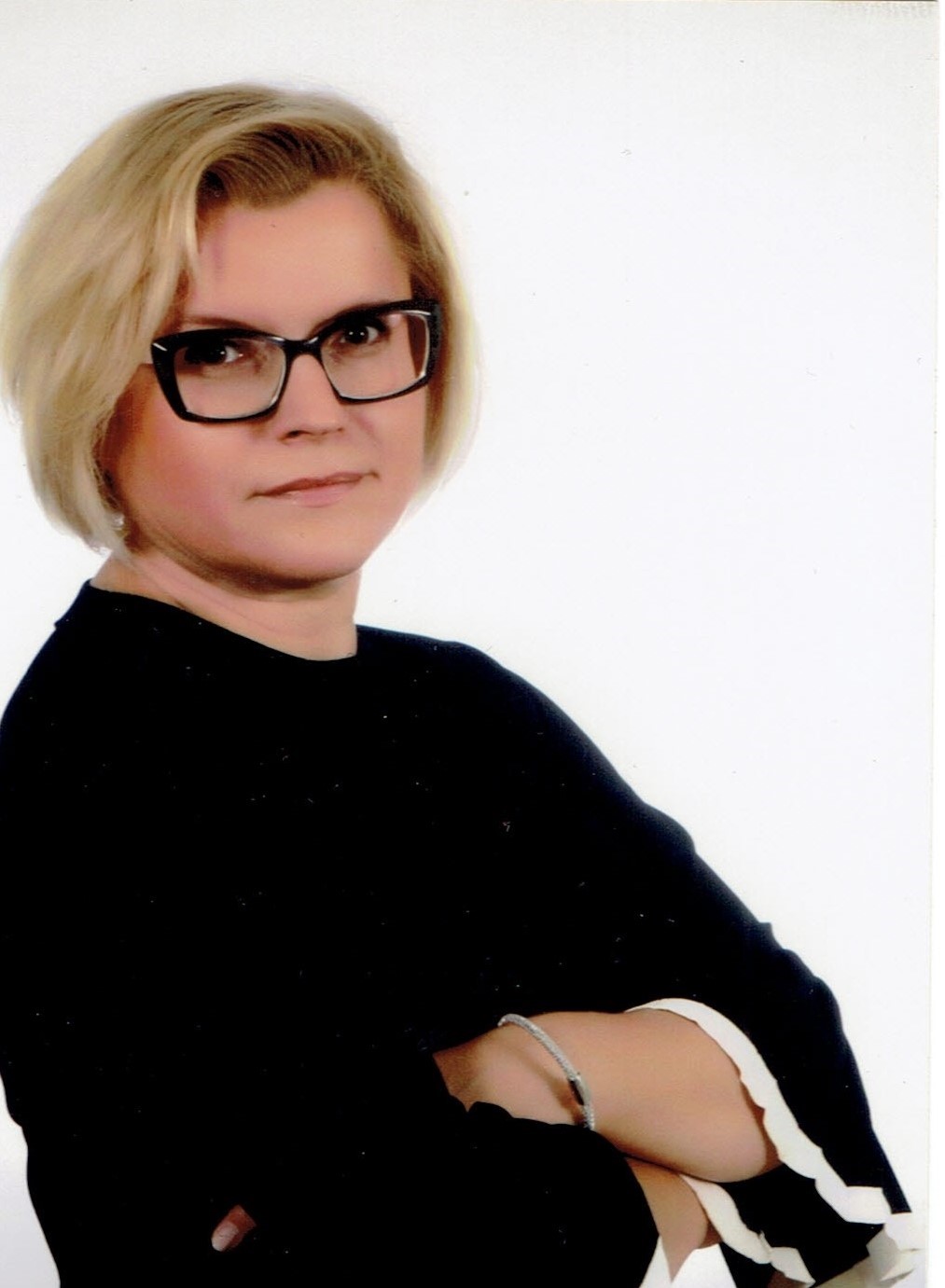
Title: European standards for the monitoring of offenders at the preliminary stage of the criminal process
Keynote presentation
Prof. Anna Gerecka-Zolynska
Adam Mickiewicz University in Poznan, Poland
Abstract
Measures carried out by controlling the whereabouts of an offender by means of electronic monitoring are playing an increasingly important role in criminal law. Nowadays, electronic monitoring is assessed as an effective means of controlling the implementation of obligations or restrictions imposed on the offender, and not only in connection with the execution of criminal penalties. In the criminal justice process, electronic monitoring is also relevant for the application of certain coercive measures, especially house arrest imposed as an alternative to pre-trial detention.
The extensive use of electronic monitoring in the criminal law of many European countries has prompted the Council of Europe to adopt recommendations setting out principles for the control of the offender under this measure in order to prevent violations of key procedural guarantees. In this context, the standards for the use of electronic monitoring listed in the Council of Europe Recommendation require comment.
The scope of the paper is limited to the presentation of the issue of the use of electronic monitoring in the application of house arrest in the preliminary stage of criminal proceedings. Against this background, three groups of problems will be discussed: the positive and negative aspects of the use of house arrest in the preliminary stage of a criminal trial and the technical conditions necessary to trigger control by electronic monitoring.
Biography
Hab. Dr. Anna Gerecka-Żołyńska - Associate Professor at the Faculty of Law and Administration of Adam Mickiewicz University in Poznan in the Department of Criminal Procedure (Poland). Author of numerous publications on criminal law, in particular criminal procedural law and international protection of cultural heritage. She cooperates with institutions dealing with the protection of human rights and the protection of cultural heritage (ORCID 0000-0001-5897-4447).

Title: Hemp for Life - no hemp, no life
Plenary presentation
Dr. Stuart W Titus, PhD
Associate, Vital4Health Nova Scotia, Canada
Abstract
Immense crimes against humanity have been committed dating back to 1937, when the unfortunate passage of the Marijuana Tax Act of 1937 put an end to both Cannabis as an Approved Medicine and Hemp as an Agricultural Crop within the United States. Using its strong influence over the following years, these crimes spread from the US throughout much of the globe.
Cannabis formerly had been utilized as an approved medicine with listings of cannabis-based medicines in the US Pharmacopoeia in the era from 1850 to 1937. Pharmaceutical companies of that era listed a wide number of cannabis-based medicines in the reparatory, Upjohn listed 23 cannabis medicines and Eli Lilly listed 36 cannabis-based medicines in their product catalogues of the 1930’s. Eli Lilly had a 156-acre form in Greenfield Indiana where they grew Cannabis Americana which competed with Cannabis Indica, sourced from India.
Hemp similarly was eradicated as the hemp paper was competition for the timberlands of the Rockefeller and Hearst empires. Hemp formerly had been introduced to New North America with cultivation records dating back to 1605 in Annapolis Nova Scotia, 1619 in Jamestown, Virginia and 1621 near Plymouth Massachusetts. My ancestors who arrived via the Pilgrim voyage in 1620 brought copious amounts of hemp seed along with them.
Over time, the medical significance of cannabis and its oil-based extracts: cannabinoids, terpenes and certain flavonoids have been further brought to light. People of prior generations used to ingest hemp seed on a regular, even daily basis. A small handful of hemp seed would provide minimal, but identifiable amount of cannabinoids, which would be later found to support a large self-regulatory system within our bodies, the endogenous cannabinoid system.
First identified in 1988, this research initially identified a cannabinoid receptor in a rat brain and became known as the CB1 receptor. Ensuing effort identified this as the brain’s largest neurotransmitter receptor site and found primarily in the brain, spinal column and internal organs of the human body. The CB1 receptor network largely relates to the body’s neurological function. Later, a CB2 receptor was identified in the gut, viscera and internal organs and relation to immune function has been identified. The human body does produce internal cannabinoids with the prominent ones identified as Anandamide and 2-arachidonoylglycerol (2-AG). A clinical endocannabinoid deficiency syndrome was identified in an early 2000’s paper by Dr Ethan Russo, describing many “newly emerging” medical conditions that were shown to be in near-epidemic proportions: Fibromyalgia, Chronic Fatigue, Migraine Headache and certain Digestive Disorders. Over time, we have seen many other maladies fall under this category: early stage dementia, epilepsy, autism and even getting into the overall metabolic syndrome of conditions: heart, cardiovascular, diabetes, rheumatoid arthritis.
The removal of the minute traces, perhaps 2 mgs of CBD from a handful of hemp seed in 1937 has escalated over the ensuing generations into a weakening of the immune system and gene pool. With the pharma companies making us all ill and sick with the removal of “anything good for us” and getting into artificial and synthetic foods, nutrients, drugs – starting right from the agricultural process, it is no wonder that the average American suffers from multiple chronic illnesses.
Besides our G protein-coupled receptors of the Endocannabinoid system (ECS), there are 65 additional molecular targets for cannabinoids. Transient Receptor Potential Vanilloid 1 – 8 (pain) receptors, internal organs, glands, intracellular targets of PPAR-y and Mitochondria along with many other regulatory receptors are all influenced by the action of cannabinoids. A strong cell-signaling activity also exists within the ECS but cannabinoids are the only molecules that signal in a retrograde manner – monitoring communication (when healthy) for potential communication errors.
In today’s world we see one in 10 Americans within the past month having used a CBD-based product. That is over 35 million Americans. A $5 billion annual market arena currently exists in the USA ($7 billion worldwide) – far greater than that for Vitamin C and yet our US FDA has yet to regulate CBD as a dietary supplement. Only the synthetic drug version carries FDA-approval.
Although progress has been made – today hemp has been rightfully returned to the American farmer as of the 2018 Farm Bill (The Agricultural Improvement Act of 2018) and CBD has been de-scheduled – the absence of Cannabinoids from our diets has had an enormously negative impact on health and wellness. The removal of these vital and necessary nutrients from our bodies has been a crime with significant long-term impact on health, consciousness and human evolution.
Biography
Clinical Associate, American Academy of Pain Management Fellow, American Academy of Integrative Medicine Open International University, Affiliate of the World Health Organization; PhD Degree in British Physiotherapeutics Fun Highlight: 1978 played as Golf Professional on the PGA Mini-Tour in Florida. 1979 Bond Trader & Underwriter on Wall Street 1990 - 2010 graduated and practiced as British Physiotherapist. Open International University, Affiliate of the World Health Organization; PhD in British Physiotherapeutics “Being an athlete and working with athletes I realized the importance of nutrients to our body and I started researching and investing into hemp:”: 2007 – 2021 Private Equity, General Hemp LLC, Medical Marijuana Inc, CEO, Board Chairrnan - Started and developed CBD-As-A-Dietary-Supplement and created the first CBD-Only Medicine / Drug permitted for epilepsy in Brazil April 2014 - legalized CBD into 47 countries - Testified on Safety and Benefits of Botanical Hemp-based CBD: World Health Organization, Nov 2017 Geneva Switzerland: US FDA May 2019 - Co-Founding Member US Hemp Roundtable - Assisted in restarting Industrial Hemp Agriculture Research Program in USA 2014.

Title: Hand writing Drawings signs of abuse in kids
Keynote presentation
Zaida Melissa
Centro Grafologico ZG, USA
Abstract
My name is Zaida Guajardo. I am a Criminologist and forensic investigator. I analyze handwriting and signature forgery. In this speech, I will discuss drawing as a handwriting analysis method in children. Graphology, or handwriting analysis, is a discipline dedicated to studying and interpreting handwriting to uncover various aspects of an individual's personality, emotions, and psychological traits. This practice is grounded in the belief that features such as the shape, size, pressure, and inclination of handwriting can offer valuable insights into a person's underlying psychology. The intriguing field of handwriting analysis presents a unique perspective on the writer's personality. It serves to identify an individual's talents and skills, frustrations, moods, temperament, and character. Additionally, it may provide indications of potential physical and mental health issues. Overall, graphology seeks to reveal significant elements of an individual's personality and emotional state through the nuances of their handwriting. Pedagogical graphology is a specialized branch focused on studying the handwriting of children and adolescents during various stages of their calligraphic development. This field is unique, as children's writing requires a different analytical approach compared to that of adults. In this speech, I'm talking about analyzing the handwriting of young learners and introducing an intriguing tool that reveals children's cognitive, emotional, and developmental progress. The drawing reflects the conscious mind and is a significant expression of the unconscious. What truly matters is not the aesthetic quality of the drawing but the symbolism and messages it conveys. Children often unknowingly transfer their emotional states onto paper. Therefore, it is essential not to force a child to draw if they do not feel the urge to do so. Drawing should be an enjoyable activity, not an obligation. Allowing a child's imagination to manifest freely is essential. Some children may channel their desire for expression through other activities like music, dance, singing, or sports, and each child needs to discover what suits them best. We should not be concerned if a child tends to use fluid forms in their drawings. Originality reflects their ability to assert their opinions. It is unsurprising if children are not upset about how they depict a tree; they might say their tree comes from Mars, for instance. However, we should be cautious about "tricky" drawings. Sometimes, a child may place a subject on one side of the paper while isolating a character or object on the other side. For example, a child might draw their family but omit a sibling or parent, placing them on the opposite side. This can indicate that the child is distancing the character from their environment.
Biography
Zaida Melissa Guajardo, Criminal Profiler, Handwriting Analyst, Grapologist. Bachelor's Degree in Criminal Justice Forensic Investigations National University Master's Degree in Criminal Profiler Escuela Internacional de Criminologia y Criminalistica.Professional Technology in Graphology and Graphotherapy.

Title: Health and Handwriting: how disease and other physiological conditions may present in the written word
Plenary presentation
Sheila Lowe
American Handwriting Analysis Foundation, USA
Abstract
Very little is written in the literature in regards to physical conditions in handwriting, and yet, it is often used as part of the diagnostic criteria for Parkinson’s Disease. Changes in handwriting can be correlated with organic disturbance, whether it is alcoholism, heart disease, cancer, or other serious conditions. The various problems that can be seen in handwriting are found in three general categories: muscular, circulatory, and skeletal. This presentation will offer some real-life examples of changes that are seen in handwriting due to physiological issues.
Biography
Sheila Lowe is a forensic handwriting examiner, author, and educator with five decades of experience in the field of handwriting analysis. Her expertise spans both personal and professional contexts, providing insights into personality, psychological profiles, and authenticity verification for legal cases. Sheila has authored several non-fiction books on handwriting analysis, including Reading Between the Lines: Handwriting Decoded, as well as the popular Forensic Handwriting psychological suspense series, blending her professional knowledge with gripping fictional storytelling. As a sought-after speaker, she has shared her insights on numerous media platforms and at conferences worldwide. Sheila's work continues to bridge the gap between science and human behavior, inspiring both forensic professionals and mystery enthusiasts alike.

Title: Mental Health Indicators in Handwriting of Teenagers and Young Adults with a Focus on Depression and Suicidal Ideation
Speaker presentation
Kim Donley Woodward
President of Write Insights, USA
Abstract
Suicidal ideation in teenagers and young adults has increased by 56% over the past decade, and remains the second leading cause of death for this demographic in the U.S. There has been renewed focus on identifying and understanding both the risk factors and the warning signs that accompany suicidal ideation in teens and young adults. Some factors that make individuals prone to suicidal ideation also overlap with indicators of depression. While not all depressed teens and young adults contemplate suicide, depression is often a gateway to suicidal thoughts. Family history of mental illness, adverse childhood events, substance abuse, and bullying can all contribute to depression and often suicidal ideation. Mental health professionals are working to train front-line staff, such as therapists, teachers, and counselors, as well as parents, to be aware of the signs of depression and possible suicidal ideation. Significant research has been done, both recent and historical, that sheds light on the handwriting indicators that are manifested in both depressed and suicidal individuals. With awareness of these indicators and analysis by professionals, handwriting can play a vital role in identifying those at risk and thus hasten the implementation of mental health supports.
Biography
Kim Donley Woodward is a certified handwriting analyst, former CIA intelligence officer and educator. Her skills and experience include strategic interviewing, threat assessment investigations, surveillance and counter-surveillance, statement analysis and deception in handwriting, and personality profiling through handwriting. She is a member of the American Handwriting Association, the British Academy of Graphology, the Association of Certified Fraud Examiners, and the Scientific Association of Forensic Examiners. She has conducted handwriting-based threat analyses for Forbes 400 clients, personality profiles for cold case crimes and private individuals. Ms. Woodward served overseas in Latin America and traveled extensively, living in Europe and Southeast Asia. She is fluent in Spanish. Ms. Woodward is the President and CEO of Write Insights, LLC which offers handwriting analysis services. Education and Certifications B.A. Anthropology, magna cum laude, Phi Beta Kappa, The George Washington University M.A., Educational Counseling, George Mason University Certified Graphologist, The British Academy of Graphology Instructor, Intelligence Reporting, Central Intelligence Agency CIA Field Operations Tradecraft courses Member, Scientific Association of Forensic Examiners Northern Virginia Community College Forensic Document Certification Served overseas in Latin America and in Europe Fluent in Spanish, working knowledge German, Italian, and Indonesian. Lived in Indonesia, Italy, and Venezuela.
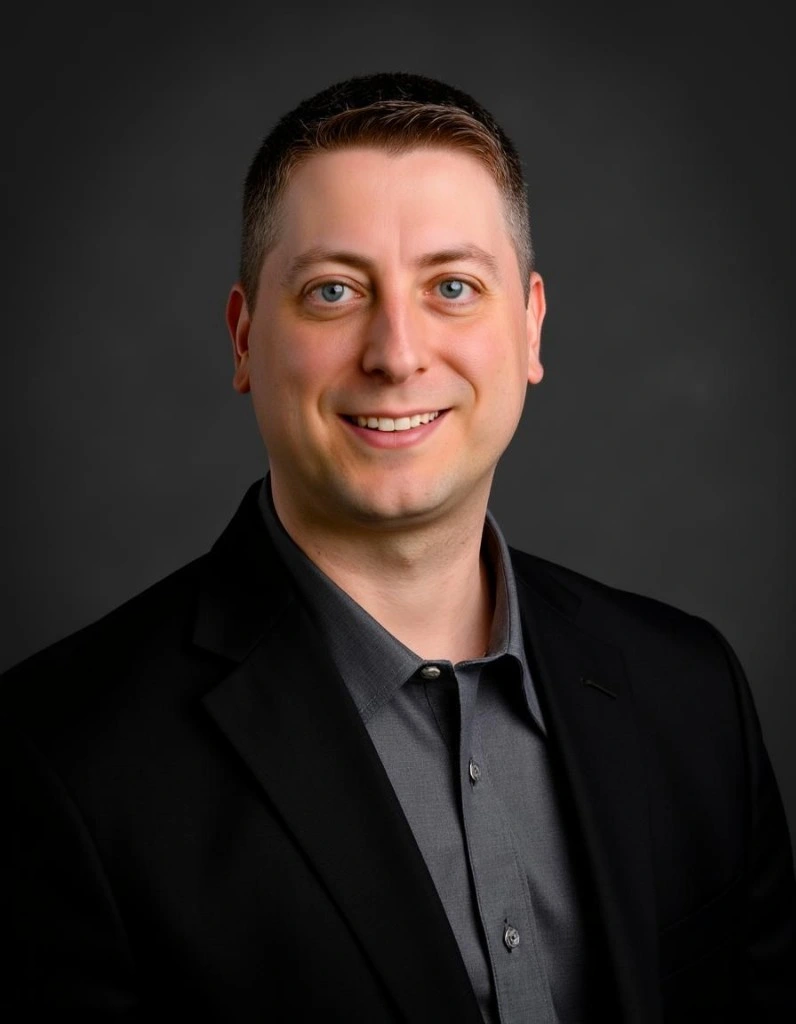
Title: Modern Attachments: Forensic Data Collection Considerations
Keynote presentation
Robert B. Fried
Sandline Discovery LLC, USA
Abstract
Modern attachments allow us to transfer large files in email messages, without the worry of size limitations. However, this convenience results in some complexity, when it comes to their identification, preservation, and forensic collection. This presentation will discuss popular platforms where modern attachments may be encountered, and some of the challenges and considerations that digital forensic practitioners must address.
Biography
Robert B. Fried has over 22 years of experience collecting and investigating electronic evidence. Robert serves on the Board of Advisors for the Masters in Investigations program at the University of New Haven, and the EC-Council Global Advisory Board for the CHFI certification. He maintains certifications, including: ACE, CFCE, EnCE, and GCFA. Robert is a licensed PI in Michigan, New York and South Carolina. He is the author of the books, Forensic Data Collections 2.0: The Guide for Defensible & Efficient Processes and Forensic Data Collections 2.0: A Selection of Trusted Digital Forensics Content (2023) & Second Edition (2024).
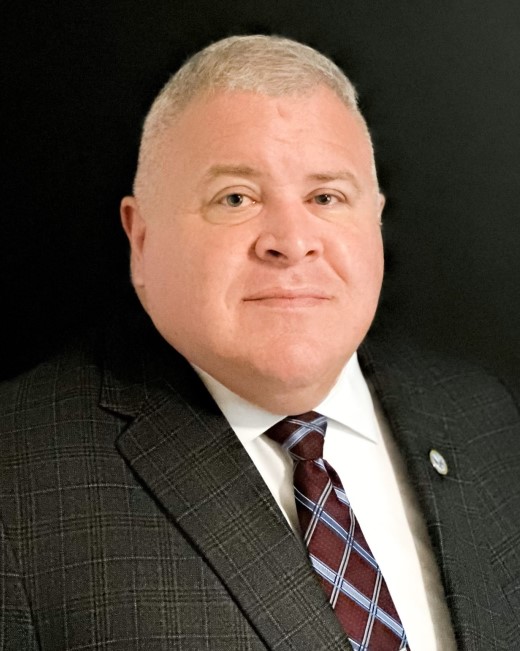
Title: Leveraging Cyber Deception Technology in Cyber Forensics: Enhancing Threat Detection and Intelligence Collection
Keynote presentation
Dr. Marshall S. Rich
Capitol Technology University and US Institute of Peace, USA
Abstract
In today's evolving cybersecurity landscape, cyber deception technology plays a pivotal role in identifying and mitigating malicious actors. This presentation explores the integration of cyber deception techniques into forensic science, focusing on their application for threat detection, intelligence collection, and the disruption of cybercriminal operations. We will delve into key deception strategies, including the use of decoys, honeypots, breadcrumbs, and dynamic deception, to create controlled environments that lure attackers and expose their tactics, techniques, and procedures (TTPs). By engaging with these deceptive elements, security professionals can gain valuable insights into adversary behavior, detect lateral movement within networks, and reduce false positives that often challenge traditional security systems. The presentation will also highlight the role of machine learning in real-time analysis of attacker behavior and its potential to strengthen defenses. Attendees will leave with a deeper understanding of how cyber deception technology not only enhances threat hunting but also serves as a critical tool in cyber forensic investigations, enabling faster detection, containment, and intelligence gathering.
Biography
Dr. Marshall S. Rich, a Ph.D. candidate in Cyberpsychology at Capitol Technology University and Senior Expert for Cybersecurity at the US Institute of Peace, leverages his multifaceted background in military, government, and corporate sectors. His work is centered on integrating psychology with cybersecurity to formulate proactive risk mitigation strategies. Dr. Rich's goal is to enhance organizational cybersecurity resilience by understanding the psychological aspects of cyber threats and bridging human behavior with technological defense systems. His extensive education includes a Doctor of Business Administration, an M.A. in Computer Resources, and a B.B.A. in Business Information Systems.

Title: Nanopathology: The New Goal of Forensic Medicine
Keynote presentation
Dr. Antonietta M. Gatti
Nanodiagnostics Foundation, Italy
Abstract
Nanopathology, the study of pathological effects induced by nanoparticles, has emerged as a transformative field with significant implications for forensic medicine. This innovative approach leverages the unique properties of nanoparticles to enhance the detection, analysis, and interpretation of forensic evidence. Nanoparticles, due to their high surface area, reactivity, and ability to interact at the molecular level, offer unprecedented precision in identifying trace evidence such as toxic substances, gunshot residues, and biological materials. In forensic toxicology, nanopathology enables the detection of minute quantities of drugs, poisons, and heavy metals in biological samples, even in cases where traditional methods fail. Furthermore, the application of nanotechnology in forensic imaging allows for the visualization of tissue damage and cellular alterations at a nanoscale resolution, providing deeper insights into the mechanisms of injury or death. The integration of nanopathology with advanced analytical techniques, such as spectroscopy and mass spectrometry, has also improved the accuracy and reliability of forensic investigations. Despite its potential, the adoption of nanopathology in forensic medicine raises ethical and regulatory concerns, particularly regarding the long-term effects of nanoparticles on human health and the environment. Nonetheless, the continued development and validation of nano-pathological techniques hold promise for revolutionizing forensic science, offering more precise, efficient, and comprehensive tools for justice and medical investigation. The use of a Field Emission Gun Environmental Scanning Electron Microscope coupled with an X-ray microsensor of an Energy dispersive Spectroscopy investigates a range of magnitude not covered by optical microscopy and genomic-proteomic investigation. This paper presents some solved cases, in different fields: military, occupational and pharmacological.
Biography
Dr. Gatti has a degree in Physics and the PhD in Bioengineering. In 2012 she was honoured with an International Fellowship by the world Societies of Biomaterials and Engineering (FSBE). At present she is Vicepresident of the Nanodiagnostics Foundation with a specific mission on the health of babies and is supervisor of the scientific laboratory of the Foundation where a Field Emission Gun environmental Scanning Electron Microscope works for the nanopathologic studies.He is Past Professor of Biomaterials at the Faculty of Biosciences and Biotechnologies at the University of Modena and Reggio Emilia (Italy) and director of the Laboratory of Biomaterials. She was Consultant of all the Governmental Commissions on Depleted Uranium and related diseases. For that she had 2 auditions at the House of Lords in London and collaborated with the Department of Defense in USA. She was Coordinator of the nano-eco-toxicological Project of the Ministry of Defence of Italy and coordinated two EU research projects of Nanopathology, Nanotoxicity and of Nanoecotoxicity.

Title: The Use of Virtual and Augmented Reality in Forensic Investigation Studies in Higher Education to advance and enhance the student learning journey
Speaker presentation
Rach Strzelecki
Arden University, United Kingdom
Abstract
There are several benefits to using virtual reality and augmented reality within education. Andrew (2021) conducted a neuroscience study to look at the effect that AR has on the brain. The study showed the following three main ways that augmented reality affects the brain. Firstly, AR drives high levels of visual attention in the brain, almost double that of non-AR related tasks. Secondly, AR elicits a ‘surprise’ response in the brain and finally what is stored or encoded into memory is 70% higher for AR experiences (Andrews, 2021. How augmented reality affects the brain)
Smith (2021) also noted that AR and VR technology allowed for fast and effective transfer of information for students and can bring an alternative and interactive learning experience. According to EdTech and the American University School of Education (2021), a mixed reality, both VR and AR, improved the student outcomes in a biology classroom. It improved the memory, retention, and recall ability whilst VR alone only improved the retention. Smith (2021) also noted that the use of VR and AR enhances engagement with study. The technology can also enhance the understanding of complex topics and improve retention in study programmes.
At Arden University, these principles are being put into practice within the BSc (Hons) Forensic and Criminal Investigation undergraduate programme with the immersive virtual and augmented reality crime world. Students will use this VR and AR to supplement their online learning with a host of formative tasks relating to forensic investigation. These tasks will be recorded and collated as their summative assessment. With greater interaction and immersive learning, students should remain engaged in their studies for longer and achieve higher grades within their modules.
Biography
Rach Strzelecki started her career as a Crime and Intelligence Analyst for Cleveland Police, working on several major investigations including human trafficking, vulnerable missing persons, drugs, and suspicious deaths. In 2006, she started guest lecturing for Teesside University in crime analytics, intelligence, and forensic investigation before securing a permanent role as a lecturer in policing. Rach has also worked at University of Wolverhampton, Interactive Pro, Buckinghamshire College Group and more recently holds a position of Head of School at Arden university. Her research has predominantly related to sexual offences and paedophilia however her publications have been within the field of terrorism, police and forensic investigations and online teaching and learning. Since joining Arden university Rach has pushed the boundaries in teaching forensic investigation with the creation of a virtual reality crime world where students can practice the processes and procedures in a virtual world, building up those employability skills before they graduate and enter into the industry.

Title: Rape Kit Backlog and it's Impact on Survivors: Why DNA Evidence is Necessary
Speaker presentation
Dr. Sarah Bahrenburg
Ctrl Alt Del Consulting, Founder, USA
Abstract
Survivors of rape and sexual assault are rarely believed. There are many barriers to prosecuting sexual predators including shame, guilt, and victim-blaming. Testimony of a survivor alone will not secure a conviction. Jurors want tangible, irrefutable evidence when it comes to sexual assault cases to corroborate a survivor's testimony. Rape kits are forensic evidence that include DNA evidence of the perpetrator. With at least 25,000 (USAfacts.org, 2023) rape kits sitting going untested, jurors will never hear or see that evidence. Therefore, survivors will never get the justice they deserve, and perpetrators will have the ability to repeat offend.
Biography
Dr. Sarah Bahrenburg is a forensic victimologist and evolutionary bio-psycho-social researcher. She received her PhD in Psychology, Public Policy, and Law from the California School of Forensic Studies and her Master's in Medical Sciences with a concentration in Forensic Medicine from the University of Florida. Dr. Bahrenburg is currently a JD candidate at Touro Law School. Her research includes interpersonal violence, cyber abuse, psychological trauma, and the victim-offender relationship.

Title: Challenges in Collecting Diagnosed Cases of the Havana Syndrome and its Anomalous Health Incidents (AHI) in the Civilian Population
Keynote presentation
Dr. Len Ber
Targeted Justice, USA
Abstract
Interim Report on the Civilian Registry for "Havana Syndrome" and its AHIs has been released in January of 2025. This is the first evert validated summary that unequivocally answers the question "Are there any civilians diagnosed with this non-kinetic form of brain injury who are not federal employees or their families?" The presentation contains analysis of and the challenges in maintaining the Registry followed by a discussion of how these challenges that include diagnostic, medical, and regulatory issues should be addressed.
Biography
Len Ber has received his MD degree from the Yaroslavle Medical School in the former USSR. After specializing in endocrinology and immunology, he joined ImmuDyne, Inc. in Houston, TX as a VP of R&D, and continued his career in the pharmaceutical and nutraceutical industry. After retiring, Dr. Ber joined Houston-based non-profit 501(c)(3) organization in the role of Global Medical Leader. In this role, he is spearheading the efforts to officially acknowledge, track, and develop measures for “Havana Syndrome” in the US population. Dr. Ber is responsible for the Civilian Registry Initiative for victims of “Havana Syndrome”. He has also been nominated as a CDC Advisor for “Havana Syndrome” in the new administration.

Title: Darkfield Live Blood Analysis of Self-Assembly Nanotechnology In Human Blood And Correlation To The COVID19 Vaccination and other Injectable Medications
Keynote presentation
Dr. Ana Maria Mihalcea
Targeted Justice, USA
Abstract
In the post COVID era, unprecedented pathology in humanity has been seen. Scientists around the world have reported self-assembling nanotechnology in the COVID19 injections. Mass spectroscopy and Electron Microscopy have revealed numerous undisclosed toxic heavy metals. Embalmers around the world have reported long rubbery clots. I have received embalmed blood of COVID19 vaccinated individuals and shown ongoing self-assembly that continues even 2 years after death. The nanotechnology sheds to COVID19 unvaccinated and can be found in the blood. It is imperative that forensic medicine is aware of these findings and incorporates them into their investigations in this biotechnological age.
Dr. Ana Maria Mihalcea, MD, PhD is a board-certified Internal Medicine Physician with a PhD in Pathology and over 25 years of clinical experience. She is the President of AM Medical LLC, an anti-aging clinic dedicated to the reversal of all diseases. She is the Author of the books “Light Medicine – A New Paradigm – The Science of Light, Spirit and Longevity” and TransHuman – The Real COVID 19 Agenda Vol 1 and TransHuman – Overcoming the Depopulation Agenda Vol 2.
She writes the Humanity United Now Substack discussing topics like Dangers of COVID19 injectables, Long Covid, vax injury reversal, self-assembly nanotechnology, geoengineering, mind control https://anamihalceamdphd.substack.com/. This research was used for the Ban the Jabs resolution passed in 11 GOP counties, was part of 25 National ARM Grand Jury Petitions for Crimes against Humanity and evidence for Dr. Joseph Sansone’s Writ of Mandamus Florida Court Filing declaring COVID19 injections as weapons of mass destruction and requesting immediate removal from the market. She serves on the Board of Directors for the National American Renaissance Movement and is an Advisory Board Member for Targeted Justice
Biography
Dr. Ana Maria Mihalcea, MD, PhD is a board-certified Internal Medicine Physician with a PhD in Pathology and over 25 years of clinical experience. She is the President of AM Medical LLC, an anti-aging clinic dedicated to the reversal of all diseases. She is the Author of the books “Light Medicine – A New Paradigm – The Science of Light, Spirit and Longevity” and TransHuman – The Real COVID 19 Agenda Vol 1 and TransHuman – Overcoming the Depopulation Agenda Vol 2.

Title: Bed Bugs and Forensic Entomology
Plenary presentation
Louis N Sorkin
Entsult Associates, USA
Abstract
Most people, when asked about forensic entomology, think of various flies and beetles because they are familiar with homicide investigations; some will know of the other venues including structural and food product infestations. The general public may be familiar with television shows and movies that feature forensics and homicides. The common bed bug, Cimex lectularius, consumes human blood and people can react differently to the sialome components. Bite reactions can even change over time and even no reaction can occur and reactions from other invertebrates can be misinterpreted as bed bug bites. PTSD issues can also occur from infestations.
Biography
Louis Sorkin received his Masters of Science in Entomology from the University of Connecticut, at Storrs and began his entomological career of over 43 years in the Department of Entomology (Division of Invertebrate Zoology) at the American Museum of Natural History, New York City, working on arachnid systematics and insect cuisine. He also curated the extensive, preserved arachnid and myriapod collections. He became interested in the common bed bug (Cimex lectularius), its biology and behaviors, and to do so has reared and fed thousands of them over the years. He is the principal entomologist and founder of Entsult Associates, Inc.
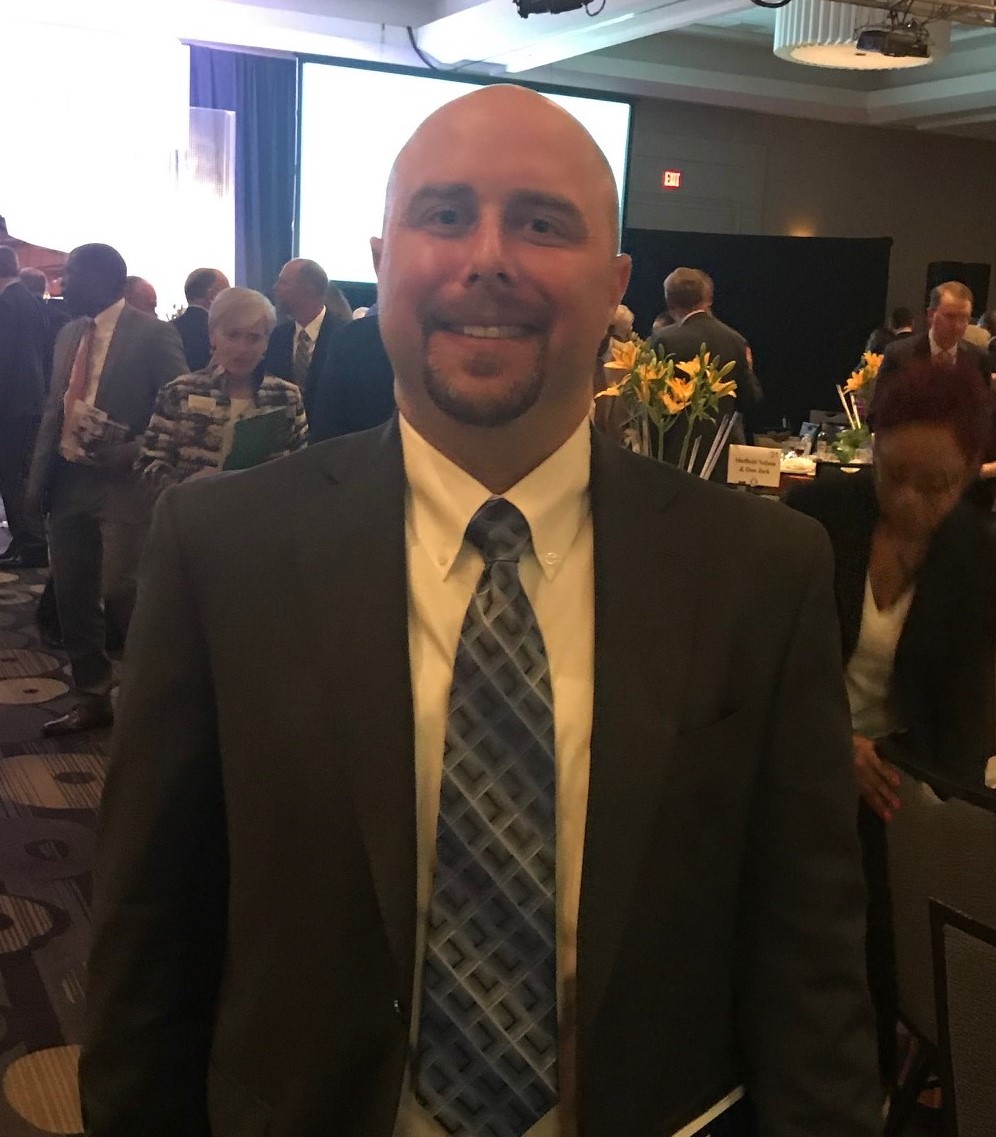
Title: A Personal Account of Neuroweapon Abuse
Speaker presentation
Kenneth Stroud
IT Analyst/ Activist, USA
Abstract
Neuroweapon abuse and EMF attacks are a growing problem in the world today. Understanding victims of these crimes should help in forensic investigations. I am honored to provide my story and views on being a Targeted Individual. Ken will also include mitigation tactics that he has learned to be helpful for those suffering from Havana Syndrome and/ or NKBI.
Biography
Ken Stroud was born and raised in Central Arkansas. He attained his Associate of Arts from Pulaski Technical College and continued his education at UALR. Ken Stroud was the Product Manager for IP based products at a major telecommunications firm. He also was part of leadership for the conversion from print to digital for the Arkansas state paper. He currently works in IT Support for an international restaurant software company. He has been a victim of neuroweapon abuse for almost 6 years. He is medically diagnosed with Havana Syndrome.
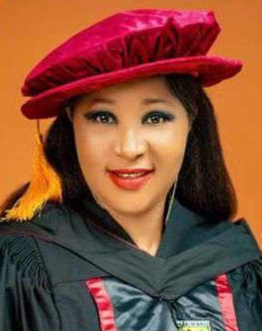
Title: Cross-Contamination of Evidence and Its Challenges
Speaker presentation
Dr. Stacy Ann Nwodo
Charisma University, Turks and Caicos Island, United Kingdom
Abstract
Cross-contamination of evidence poses significant challenges in forensic investigations, potentially compromising the integrity, reliability, and admissibility of forensic findings. This issue arises due to various factors, including improper handling, inadequate storage conditions, and lapses in procedural protocols. Given the critical role of forensic evidence in criminal justice, addressing contamination risks is essential for ensuring accurate and credible case outcomes. The challenges associated with cross-contamination of forensic evidence and the effective strategy to mitigate contamination risks is examined. A systematic review of forensic literature, standard operating procedures, and case studies was conducted to identify common sources of cross-contamination and the key risk factors includes inadequate personal protective measures, improper packaging and transportation, environmental exposure, and human error. Additionally, best practices from leading forensic institutions were analyzed to identify measure for contamination prevention. The findings emphasized that preventing cross-contamination requires strict adherence to chain of custody protocols, proper use of personal protective equipment, and regular training for forensic practitioners, law enforcement personnel, and legal professionals. The study highlights the importance of standardized forensic procedures, investment in modern forensic infrastructure, and interdisciplinary collaboration to minimize contamination risks. Addressing cross-contamination challenges necessitates rigorous standard operating procedures, continuous professional training, and enhanced forensic laboratory practices. Strengthening forensic protocols and fostering cooperation among law enforcement, forensic experts, and judicial stakeholders can significantly enhance the reliability of forensic investigations. Hence, the need to establish standardized contamination prevention guidelines, integrate technological advancements in forensic analysis, and allocate adequate resources for forensic infrastructure development as crucial steps toward ensuring the integrity and credibility of forensic evidence.
Biography
Dr. Stacy Nwodo, PhD, is a highly esteemed expert in forensic accounting, security, education, and administration. She holds three master's degrees and two PhDs-one in Forensic Accounting and Audit from the British West Indies (UK) and another in Security and Strategic Studies from Nigeria- demonstrating her outstanding academic credentials. Her career seamlessly blends public and private sector experience, with her roles as a Chartered Accountant and Licensed Forensic Professional. Dr. Stacy actively leads hands-on forensic training initiatives, bringing her expertise to diverse domains. As Country Director of the International Institute of Certified Forensic Investigation Professionals (IICFIP) in Nigeria, Lead Consultant at JJTC Consulting Ltd, and the International College of Disaster Management and Forensic Studies (ICDMFS), as well as Board Chairman of IACDECFP in the UK, she plays a pivotal role in shaping global forensic practices and her contributions to humanity in term of giving to the less privileged is immeasurable.

Title: PHD ETDC the Forensic Reconstruction Methodology
Keynote presentation
Dr. Carlos A. Gutierrez
Chaminade University of Honolulu, USA
Abstract
This presentation is about forensic reconstruction methodology, and its application in cases, and its scientific results, which have changed the path of the investigation, which is sometimes biased by the police or the investigators. This presentation will benefit the forensic science community by illustrating the importance of teaching and applying this scientific methodology to minimize human error in evidence interpretation and conclusions. The conclusions that the forensic scientist can reach after applying this methodology can help provide the key answers that the investigator needs to identify the perpetrator of the crime or exonerate the suspect. Wrongful convictions and changes in case classifications, such as shifting from suicide to homicide, unfortunately occur frequently and are typically due to bias in the investigation. This methodology is an update of the one published in 2009 by Ross Gardner and Tom Bevel in their book Practical Crime Scene Analysis and Reconstruction. It consists of six steps: Problem, Data, Hypothesis, Expectation, Test, and Conclusion. However, after applying this methodology in several cases and in the classroom, I realized it needed an update. Although it is a good method, I learned that a new step is required where the forensic expert can express and discuss their professional opinion before reaching conclusions. This revised methodology is termed PHD ETDC, which stands for Problem, Hypothesis, Data, Expectations, Test, Discussion, and Conclusions. This new methodology is taught in the Forensic Reconstruction classes and Laboratory at Chaminade University of Honolulu and is already used in several cases. During this presentation, the attendees will learn about one case that was ruled a suicide, but after applying this forensic reconstitution methodology, the case was changed to homicide.
Biography
Carlos A. Gutiérrez Ayala holds a Doctorate in Forensic Sciences from the Instituto de Ciencias Jurídicas de Nayarit (Law Science Institute of Nayarit State), Mexico. He also earned a Master of Science in Forensic Sciences from Chaminade University of Honolulu, USA, a Master’s in Educational Management from Universidad Andrés Bello in Chile, and a Master’s in Forensic and Legal Medicine from Tech University in Spain. Dr. Gutiérrez is a retired Captain of the Chilean National Police, where he served for 18 years. He is a globally recognized forensic expert, has received awards in several countries, is the author of two books, and has been a speaker at numerous scientific conferences worldwide. He is currently an Assistant Professor of Forensic Sciences at Chaminade University of Honolulu.

Title: Epidemiological study of limb amputations in four health facilities in Senegal and Mali
Speaker presentation
Dr. Brahima Dicko
Forensic Doctor, Mali
Abstract
Background: Aims of study were to determine socio-economic, topographic, amputation and permanent partial disability patterns.
Methods: We conducted an epidemiological and cross-sectional study of hospital records and records over the period from January 1 to December 31, 2009. Registers and patient’s cases report forms have been consulted. Patient recruitment was conducted in Mali (Regional hospital of Kayes, Teaching university hospital of Kati) and Senegal General Hospital of the Grand Yoff (Dakar) and the Regional Hospital of Tambacounda). All amputation records were included.
Results: 107 cases were collected, 2.7 males per 1 woman. Farmers represented 21.5% followed by workers 13.1%. 20% of amputees patients were diabetic and 2% had high blood pressure hypertension associated with HIV and AIDS. Amputation occurred as a result of extensive lesions for 29% of cases and failure of traditional treatment 28%. The amputation involved the pelvic limb in 53.2% versus 44.9% for the thoracic limb and 1.9% for both. The amputated limb was right pelvic 29%, pelvic left 19.6%, right chest 24.3% and left thoracic 17.8%. Permanent partial disability was judged to be severe (43.8%), moderate (30.5%) and severe (25.7%).
Conclusion: Amputation occurs mostly in a context of trauma, it affects young men and workers. Failure to respect the rules of the road and the frequent use of traditional medicine are decisive in its occurrence. Health promotion needs to be strengthened.;
Biography
Forensic Doctor - Research Officer. At University Hospital of Point G, BAMAKO-MALI. Lecturer at Medical and Odontology Faculty of BAMAKO. I am also: Trainer for Dead Bodies Management for ICRC of MALI.
“ Will be updated soon...”
+91 9491 456 452
Door No.200, Immidhihalli Main Road, Whitefield-560066, Bangalore, India
About Us
Global Scientific Guild organizes conferences and webinars to promote quality research and real world impact in an atmosphere of true international co-operation between scientists, doctors, professors, practitioners, engineers and industry by bringing together the world class renowned personalities to discuss the latest developments and innovations at one common platform.